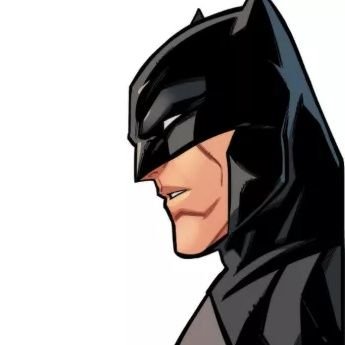
Cian Tormey@CianTormey
Aug 11, 2021
27 tweets
Last week I was asked to break down a "talking heads" page in comics. We're often told they're hard because there's no punching, as an artist you need to handle "quiet moments" like they're... less interesting. But quiet moments are magic and require more from you. A thread:
I didn't want to draw something I've already seen, so I reached out to my friend @Jim Zub - not only is he a magnificent writer, he likes to talk theory and help us all get better. I hope he looks at what I've done and critiques it, because there are no right answers at any level:
HOUSEKEEPING: He gave me a "quiet moment" from Avengers #26. I broke down the page he sent me; I don't know what came before or after, this is not canon. Drawings are rough, this is for teaching purposes, let's talk theory - & stay with me as we go, I welcome questions at the end
Let's jump in with a side by side. The script breakdown is actually simpler than the splash I explained last time, but the art requires greater explanation, so we'll work through that more than last time. Save this!:
Let's look at the script then. Young artists are told to vary their portfolios with "Quiet Moments" and there's an implication that these moments are boring. They're more emotionally loaded in less space than fight scenes, so we need to change what "Quiet Moments"seems to mean
Ok, this will look simple by comparison to our splash breakdown, but that's because Jim establishes our environment and then asks us to start staging within it. Read it like an exam, kids - YOUR SCRIPT TELLS YOU YOU NEED A COUCH IN PANEL 3
It seems so obvious, but scripts are like exam questions - READ EVERYTHING BEFORE YOU START. Sometimes the thing you hinge the whole page on is in panel 5 - but if the characters need it, well, you have to establish it before they need it. If panel 1 is your establishing shot...
Well then guess what. We need it in Panel 1. Because we need to make everything feel like these characters live here, respond to the environment... Think about it a little bit like staging each scene of a play on a stage. If they need it, we put it in the establishing shot. Ok?
OK. Brief reminder of the "Hierarchy of Information". I've numbered the dialogue in the script to show you how we arrange it across the page - most important is bubble 1, follow that down through to the last bubble. After this, I'm going to explain page layout and compostion
Aside no.1 : Everyone should know - we get a script, we draw a page, we do our best to leave space for the letterers to do magic. It's not an exact science, we often screw up, love your letterer and always think of them. They may never know, but their wings feel our thoughts
Ok, let's get into how we stage a page, & what drawing a "Talking head" page requires. Guys, they're not boring, they're endlessly rewarding and complicated. Want to be a comic artist? You're a director, all the actors, and the Lighting Artist (DOP - Look it Up). Here's our page
Aside no. 2: Breaking pages down is hard. I find it terribly stressful, to be honest. But you know what, there's no right answer - Do the best you can to tell the story as clearly as you can, based on the bits you think are important. Watch this
Guys, we've done this before. Wanda speaks first, she needs to be top left. She's going to be spoken to by Jericho, he needs to sit right, depth creates importance, and we need space for their dialogue. But this panel establishes the environment - an "est. shot", with me?
Comics - Staging, blocking, depth, volume, composition. Wanda is in the foreground (I'm going to tell you something magic she's doing in a sec) and it travels back to Jericho. The door frames him. We aim to frame EVERYTHING, you'll see in subsequent panels. Couch visible, eh?
Ok, we talked about "Hierarchy of Information" before. But here's something that you should try to find in your talking head pages: Objective correlatives. Things that can represent what your characters are feeling so the dialogue doesn't have to do it. Show don't tell. Look:
This is important. Jim set this in a library, so we have props. Wanda has a book in panel one. In panel two, she reaches a decision - she shuts it, it's done. She still carries the decision in P3, but she sets it aside in 4. She's ready to move past her decision
So we did something similar with Jericho- arguably more obscure, but look. He arrived wanting something. Wanda is open to it. Jim set a story beat of uncovering the (infamous) couch - well guys, if that's not like prepping a bed, take my pencils off me. Objective correlative yo
"Your portfolio needs quiet moments" - it does. But what that means is, can you find magic in these terribly personal moments? These freeze frames of vulnerability? Can you make the readers understand the need and fragility they are showing each other?
Yeah, it's a quiet moment because a sentinel isn't exploding outside the library, but that's not really fair. This isn't quiet in an emotional sense - it's supercharged. The air is thick with it, the explosions are invisible. But you have to help the reader know
Lastly then, let's just look at composition and framing. Again, many artists would do this differently, I've not seen the published pages, I just want you to know what I was thinking:
Ok guys, bit of a mess here, but I'd like to tell you my golden rule. You bring readers through the page by orienting them around a face or a hand. We are animals that find meaning in faces and hands - we read comics the same way - you're talking to our monkey brains
I did ignore Jim's panel description in panel 2 for Wanda in profile... I chose ultimately not to let the emotional beat register on her face at all, I thought the book could do it for me, and it freed up panel 3. It allowed me to vary the space Wanda used in panels 1,2 & 3
I'll wrap this up in two more tweets, I think. Framing and emotional beats:
I can call faults in my page, it's not a perfect composition. But they rarely are, we have to strive for it, but perfect cannot be the enemy of the good. Our pages are for the letterer, the colourist, ultimately, the reader So here's what the panels are doing:
This was the intention of the staging. We block areas out to reward the reader. We ping them off faces, hands, lips, shapes like pin balls, that's your job. And finally..
And this is what the "Shots" were doing. No comics vocab, no designy nonsense, the movie look at the page. Everything had it's moment, The characters let us and each other know what they wanted, and we just got closer to their intimacy. I think that's what the script asked for
Your portfolio might need "Quiet pages". But trust me, the pages aren't quiet, and that's not the ask. Find the humanity, the vulnerability, and work those objective correlatives. I think you'll be fine ;)
Missing some tweets in this thread? Or failed to load images or videos? You can try to .














